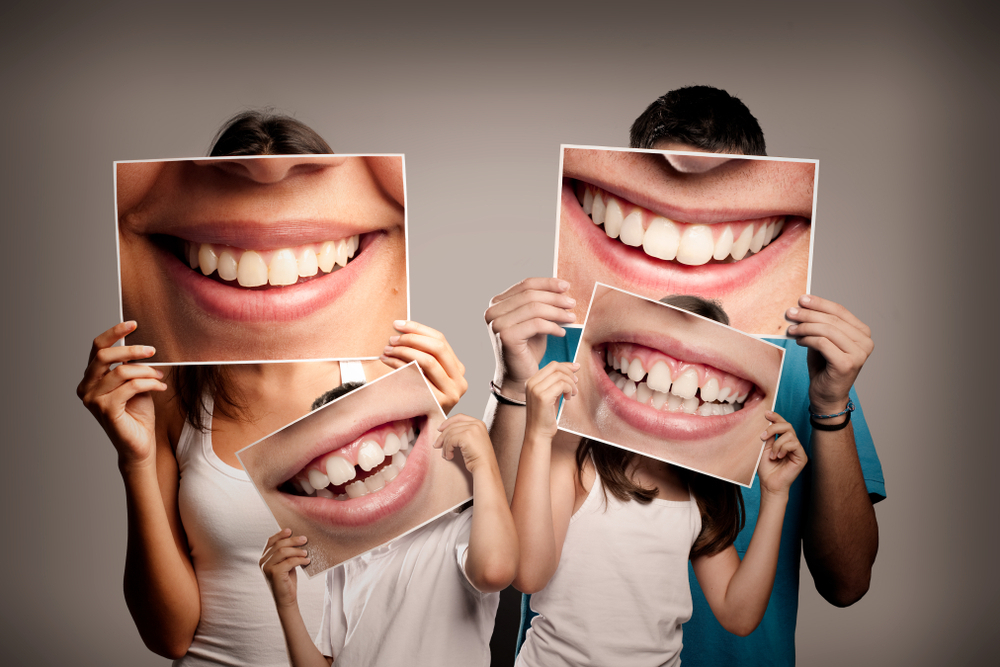The Best Strategy To Use For Legacy Orthodontics
The Best Strategy To Use For Legacy Orthodontics
Blog Article
The 15-Second Trick For Legacy Orthodontics
Table of ContentsLegacy Orthodontics Can Be Fun For EveryoneUnknown Facts About Legacy OrthodonticsThe 6-Second Trick For Legacy OrthodonticsThe Basic Principles Of Legacy Orthodontics See This Report on Legacy Orthodontics
In enhancement, we supply flexible therapy routines, adaptable payment alternatives and a fun, pleasurable experience.An orthodontist is a dental practitioner educated to diagnose, avoid, and deal with teeth and jaw irregularities. Orthodontists work with people of all ages, from kids to adults.
Malocclusion, or misaligned teeth, can bring about oral concerns, consisting of dental cavity, gum disease, and challenging or uncomfortable eating. Not every person is birthed with straight teeth. If you have a poor bite or big spaces in between your teeth, you might desire to seek advice from a dental practitioner focusing on orthodontic care.
The 15-Second Trick For Legacy Orthodontics
( Image Credit Score: DigitalVision/Getty Images) Orthodontists utilize repaired and detachable dental tools, like dental braces, retainers, and bands, to transform the placement of teeth in your mouth. Orthodontic therapy is for dental problems, including: Misaligned teethBite issues, like an overbite or an underbiteCrowded teeth or teeth that are also far apartJaw misalignmentThe objective of orthodontic therapy is to enhance your bite.
While you may believe of orthodontists as mainly for children or teenagers who need braces, they can fix oral issues at any kind of age. Orthodontists participate in university, dental college, and orthodontic institution.
, however not all dental practitioners are orthodontists. They concentrate on two areas: How to properly and securely relocate teeth Exactly how to correctly direct development in the teeth, jaw, and faceOnce an orthodontist has actually finished training, they have the choice to end up being board accredited.
The Best Strategy To Use For Legacy Orthodontics
Imbalance, or malocclusion, is the most usual reason individuals see an orthodontist. It is hereditary and is the result of size distinctions between the top and reduced jaw or between the jaw and teeth. Malocclusion results in tooth overcrowding, a twisted jaw, or uneven bite patterns. Malocclusion is normally treated with: Your orthodontist attaches metal, ceramic, or plastic square bonds to your teeth.
If you have just small malocclusion, you might be able to utilize clear braces, called aligners, rather than conventional dental braces (https://www.cheaperseeker.com/u/legacyortho). Some individuals require a headgear to aid move teeth into line with pressure from outside the mouth. After braces or aligners, you'll require to use a retainer. A retainer is a customized tool that keeps your teeth in position.
They're usually utilized on kids. They can produce added area in the mouth without needing to pull teeth. If you have a severe underbite or overbite, you may need orthognathic surgery (also called orthodontic surgical treatment) to lengthen or reduce your jaw. Orthodontists utilize cables, surgical screws, or plates to support your jaw bone.
You might need to see an orthodontist if you have: Crowding or otherwise enough room for every one of your teethOverbite, when your top teeth come by your base teethUnderbite, when your bottom teeth are also far forwardSpacing or concerns with gapsCrossbite, which is when your upper teeth fit behind your bottom teeth when your mouth is closedOpen bite or an upright space in between your front base and top teethMisplaced midline, when the facility of your base and upper teeth do not align Correcting a dental malocclusion can: Make biting, eating, and talking easierImprove the balance of our face and your overall appearanceEase pain from temporomandibular joint conditionsSeparate your teeth and make them read here easier to clean up, helping avoid tooth decay or tooth cavities It's usually a dental practitioner who first notices misaligned teeth during a regular examination.
The Only Guide for Legacy Orthodontics

During your initial orthodontic examination, you'll likely have: An oral examPhotos taken of your face and smileDental X-raysPanoramic (360 degree) X-rays of your face and headImpressions to develop molds of your teethThese tests will certainly aid your orthodontist recognize exactly how to proceed with your treatment. orthodontist. An orthodontist is a dental practitioner that's had training to treat your teeth and jaw
Orthodontists might execute surgical treatment, exams,X-rays,and even more to assist you obtain a more comfortable, healthier smile. An orthodontist is focused on your bite, so something like a cracked tooth would be handled by a dental expert. Orthodontists are dental experts yet not all dentists are orthodontists. Orthodontists are concentrated on your bite, or the method your teeth meshed, and the straightness of your teeth.
Ever asked yourself just how celebs always appear to have flawlessly straightened teeth? The answer commonly depends on the experienced hands of an orthodontist. But exactly what does an orthodontist do? Orthodontists are oral experts who concentrate on fixing abnormalities in the teeth and jaws. Their know-how goes beyond simply creating a lovely smile; it includes enhancing your overall dental wellness and function.
Legacy Orthodontics for Beginners

, orthodontists have a diverse toolkit at their disposal. These reliable dental braces make use of a system of braces bonded to the teeth and connected by cables.
Clear aligners, like Invisalign, are a preferred alternative for clients seeking a more discreet therapy choice. These detachable trays are customized to considerably change the teeth's placement. Headwear might be used in conjunction with braces or aligners to apply additional targeted pressures, particularly for correcting jaw discrepancies. In cases of narrow jaws, palatal expanders can be used to create space for proper tooth positioning.
Report this page